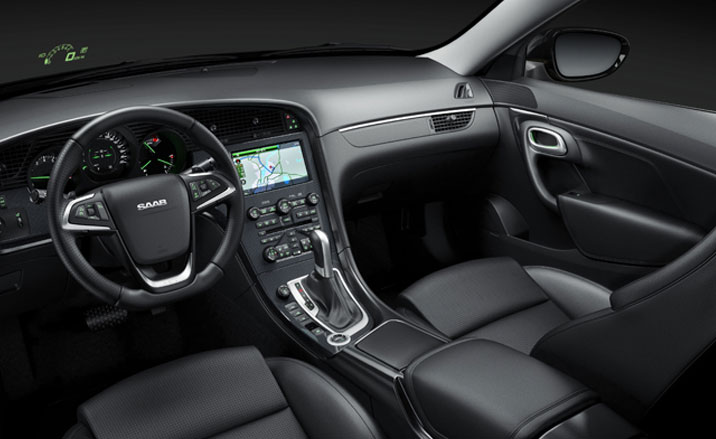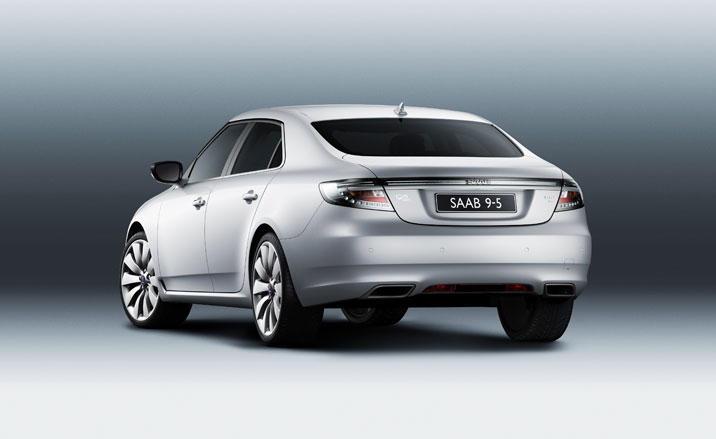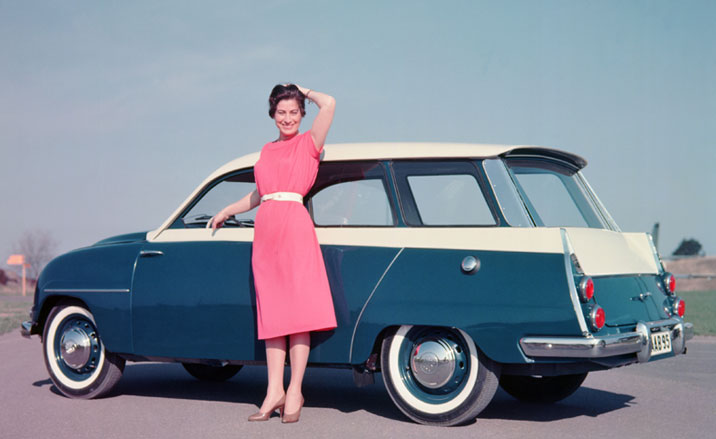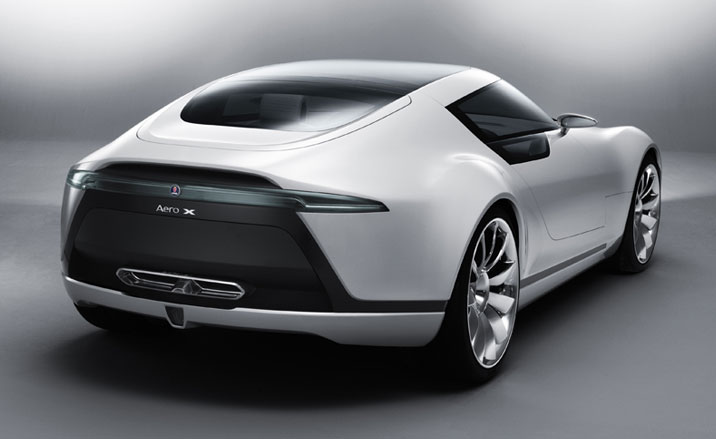Saab design

The death of a design classic makes for an easy obituary but sad reading. General Motors's decision to wind down Saab Automotive is distressing news but no shattering revelation. The Trollhattan-based manufacturer has consistently
failed to turn a profit since 2001. The company sold 93,295 cars in 2008 but still managed to haemorrhage a cool 3 billion Swedish crowns ($392 million), a sum that even America's largest automaker was unable to sustain.
In light of GM`s own financial failings and dwindling market position, the company had been seeking an appropriate buyer for Saab since early 2009. Despite interest from from Sweden and The Netherlands in the shape of Koenigsegg and Spyker - both quirky, low-volume specialist manufacturers - the egg timer appears to have passed its final grain.
Despite the imminent mass unemployment looming over the industrial belt of southwest Sweden, the government was not prepared to offer Saab a financial lifeline. The end was hastened by GM's decision to off-load production equipment for the venerable 9-3 and 9-5 models to China's BAIC (a swift and easy way for BAIC to gain access to tried and
tested technology).
Many hold GM directly responsible for the demise of Saab Automotive and it’s hard not to disagree. For the enthusiast, Saab signalled innovation and individualism, and the slow and steady eradication of these qualities under the American giant meant the company could no longer claim to own its niche. When Saab were Saab the
brand thrived on strong styling, quirky originality and healthy consumer loyalty, attributes that were slowly diminished following GM's 50% acquisition in late 1989 and eventual complete takeover at the turn of the century.
In 1994, Saab's chief designer Bjorn Envall retired after 25 years at the company. Envall`s unusual design approach was the embodiment of an altogether different set of motoring preferences. During his tenure Saab developed and marketed concepts taken for granted by the present day driver, like headlight wipers, electrically heated seats and side impact technology, safety and comfort features inspired by the Swedish climate. Performance was also important: the company built the first production car with a turbo-charged engine, the Saab 99.
But most of all, Envall’s creations possessed a soul that Saabs' competitors lacked, a perceived character that was formed through a mix of ergonomics, practicality, familiarity and function. Saab owners were loyal. They overlooked quirks and cherished difference. Regrettably GM have taken just 15 years to deconstruct what took Saab over half a century to achieve, creaming off Saab's engineering talent to work elsewhere in the company's global portfolio.
Along with Saab enthusiasts, its engineer, architect and graphic designer owners, it is with palpable regret we report the near inevitable end of the company. There's still hope that the name will live on - after all, a brand new 9-5 model is all tooled up and ready for production (although there have been hints that the handsome design
would be cruelly re-badged as a Buick) and Spyker are rumoured to still be in with a chance. With uncertainty still in the air,
we present a gallery of Saab as we remember it best, a purveyor of true Scandinavian style.
Wallpaper* Newsletter
Receive our daily digest of inspiration, escapism and design stories from around the world direct to your inbox.

The utterly functional interior space of the Saab 9-5

A sleek side view of Saab's 9-5 Estate Anniversary Edition

The pared-down stylings of the all new Saab 9-5, 2009

The BAIC (Beijing Automotive Industry Holding Corporation) has now taken over production of the entire Saab 9-5 range

The Saab 9-X BioHybrid

Designed in 2008 to take on other hybrid models entering the market, the Saab 9-X Biohybrid offers the vision of what a Saab compact could achieve

The Saab 9-X Convertible

The souped-up interior chassis of the Saab 9-X Convertible

Stepping back, the Saab 95 prototype from 1960

Saab's 95 prototype in action

Saab's characteristic, fin-like shapes came into their own with 1972's 99 model

The Saab Aero X

The Saab Aero X's rear-opening cockpit canopy in action

The two-seater sports coupe has undoubtedly sexed-up Saab's back-catalogue

A meaty rear view of the Saab Areo X

The high-spec Saab Aero X in action

An obvious precursor to the super-sporty Aero X model, Saab's EV-1 from 1985
-
 All-In is the Paris-based label making full-force fashion for main character dressing
All-In is the Paris-based label making full-force fashion for main character dressingPart of our monthly Uprising series, Wallpaper* meets Benjamin Barron and Bror August Vestbø of All-In, the LVMH Prize-nominated label which bases its collections on a riotous cast of characters – real and imagined
By Orla Brennan
-
 Maserati joins forces with Giorgetti for a turbo-charged relationship
Maserati joins forces with Giorgetti for a turbo-charged relationshipAnnouncing their marriage during Milan Design Week, the brands unveiled a collection, a car and a long term commitment
By Hugo Macdonald
-
 Through an innovative new training program, Poltrona Frau aims to safeguard Italian craft
Through an innovative new training program, Poltrona Frau aims to safeguard Italian craftThe heritage furniture manufacturer is training a new generation of leather artisans
By Cristina Kiran Piotti
-
 Peugeot’s sparky 308 gets hybrid power and handsome lines
Peugeot’s sparky 308 gets hybrid power and handsome linesThe Peugeot 308 proves that mass-market design needn’t be dull, blending hybrid power with sharp lines and excellent detailing
By Jonathan Bell
-
 BMW Motorrad brings out the big guns for its newest cruisers
BMW Motorrad brings out the big guns for its newest cruisersBMW Motorrad R 18 Bagger and Transcontinental set the tone for high-voltage cruising with a brand collaboration with speaker specialist Marshall
By George Chapman
-
 Dacia’s new Manifesto concept is a true outdoor utility vehicle
Dacia’s new Manifesto concept is a true outdoor utility vehicleUtilitarian auto brand Dacia sets a bold new agenda with its Manifesto, a concept car pitched at the active outdoor market
By Jonathan Bell
-
 The sun sets on traditional supercars at California’s Monterey Car Week
The sun sets on traditional supercars at California’s Monterey Car WeekMonterey Car Week, the world’s most prestigious car gathering, is showcasing ever-more extravagant special editions, coachbuilt cars and all-new electric concepts. Here are seven key machines from 2022
By Rory FH Smith
-
 Is McLaren’s GT a sports car, a tourer, or the best of both?
Is McLaren’s GT a sports car, a tourer, or the best of both?The McLaren GT is a capable all-rounder dressed up in svelte supercar clothes. It might also be the last of its type
By Jonathan Bell
-
 Rolls-Royce puts the Phantom back on its lofty pedestal
Rolls-Royce puts the Phantom back on its lofty pedestalA mid-life refresh ensures the flagship Rolls-Royce Phantom Series II is at the top of its game, a last hurrah for traditional engines before an electrified future
By Jonathan Bell
-
 Prodrive’s new racing simulator is shaped by Callum to be front of the grid
Prodrive’s new racing simulator is shaped by Callum to be front of the gridThe racing simulator shapes up – this new design from Prodrive and Callum is honed for the high-end games room
By Jonathan Bell
-
 928 by Nardone Automotive: a restomod Porsche with Gallic verve and Italian style
928 by Nardone Automotive: a restomod Porsche with Gallic verve and Italian style928 by Nardone Automotive is a gracefully modernised version of Porsche’s endearingly different 928
By Jonathan Bell